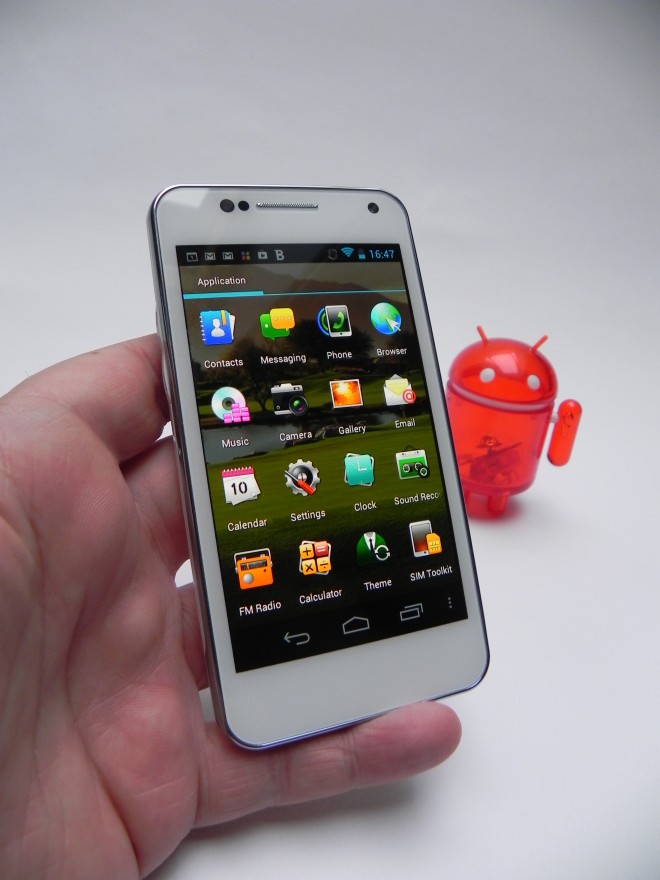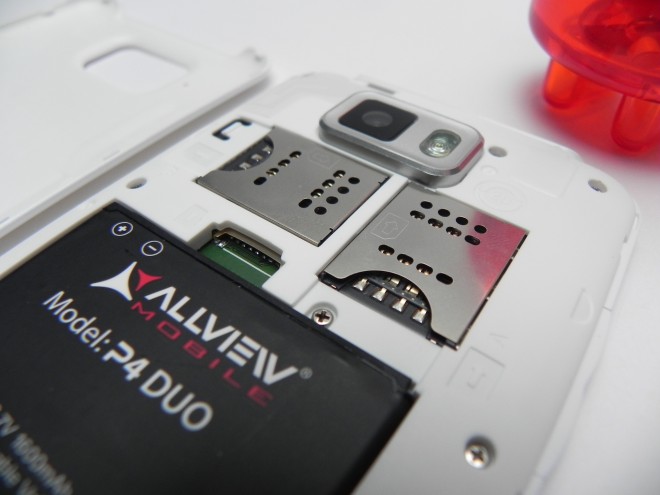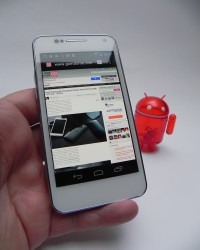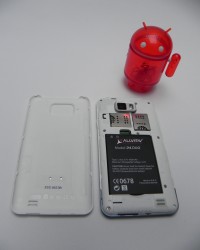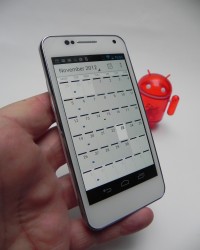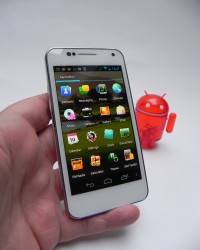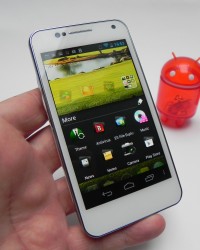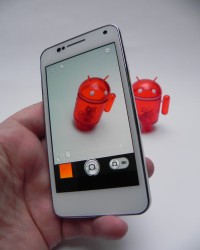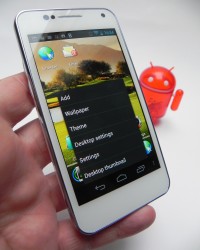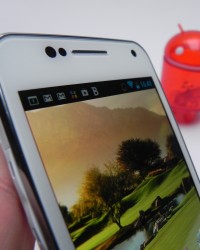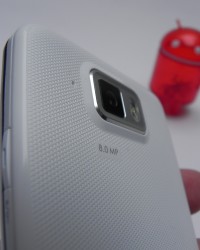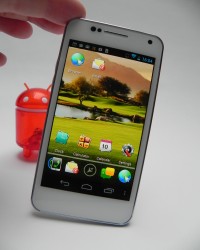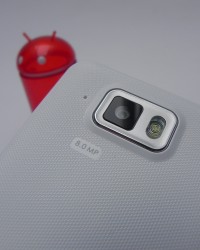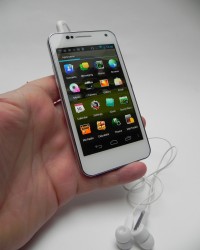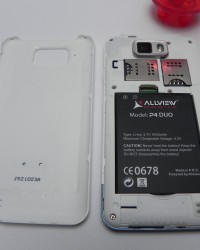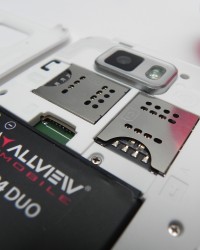After testing the Allview P4 and P5 handsets, it’s time to test the evolved versions of the handsets. One of them is the Allview P4 Duo, a dual SIM dual core handset that features a pretty nice display. Its price is $360 and this model was launched in October. This is a dual SIM dual standby dual core phone with a Super AMOLED Plus screen.
The design of the new P4 is elegant and it reminds me a bit of the iPhone and Galaxy S II. It has a good grip, a lid for the microUSB port and a pretty resilient battery cover. Under the battery cover we find a microSD card slot and two SIM slots. I find the lower edge of the device, below the display to be useless, since it doesn’t feature physical or capacitive buttons. Allview P4 Duo measures 9.9 mm in thickness, weighs 118.4 grams and has a metallic edge around the device, for extra elegance.
This product is available in black or white and it features a 4.3 inch display with 480 x 800 pixel resolution, 240 dpi pixel density, 16 million colors and Super AMOLED Plus technology. The device has Gorilla Glass protection and other specs include a dual core Mediatek MT6577 Cortex A9 1 GHz, with a PowerVR SGX 531 Ultra GPU. We also have on board of the unit 512 MB of RAM, 4 GB of storage, of which 1 GB are taken by apps and 2 GB are user available. The microSD card slot supports cards up to 64 GB in storage.
Allview P4 Duo supports WiFi 802.11 a/b/g/n connectivity, DLNA, WiFi Direct, Bluetooth 3.0, microUSB, has a GPS on board, an accelerometer and FM radio. HSDPA connectivity with 7.2 Mbps speed is also supported and at the back of the handset there’s an 8 megapixel camera with LED flash and an Omnivision OV8830 sensor, the same one from the Allview P4 Alldro and iPhone 4. Upfront we’ve got a 0.3 megapixel camera and inside the phone there’s a Yamaha amplifier. Under the hood there’s a Li-Ion 1600 mAh battery, good enough for 300 minutes of talk time or 240 hours of standby functioning. Overall, the battery lasted for about a day of normal use.
As far as video playback goes, the handset offers deep blacks on the display, good viewing angles and great sunlight visibility. Brightness could have been better, I have to be honest… On the audio side, the Yamaha amplifier handles everything perfectly. The audio quality is excellent and so are the bass and high notes. Moving on to the camera, the interface is personalized by Allview in this area and we also get HDR, 30 fps 720p video capture, but the compression is a bit too big.
There’s also an image stabilizer and geotagging, plus touch focus. Overall, the camera is pretty good, but I wouldn’t go further than that. Finally, on the software front, Android 4.0.4 runs the show, with notification area toggles and a notification area that has been customized in order to be accessed by swiping down from any area of the screen, not just the top. The widgets are not included in the apps area anymore, so you can reach them by keeping the screen pressed.
We also ran some benchmarks on this model and found it to score 2742 points in Quadrant, 6310 points in AnTuTu, 23.6 FPS in NenaMark 2, 1117 points in Vellamo and 1505 in the new Browsermark test. That surpasses the performance of both the Allview P4 and P5. You can also customize your experience with a series of themes, that some people have complained about, since they’re considered a bit childish. The default keyboard on the phone is kind of hard to use, so I suggest you activate the standard Android one.
So, I have to say that drawing the conclusions, this phone has a good design, nice camera, very good audio, dual SIM ability, decent battery and very good screen, but the lack of more RAM and resolution are important, too. The phone gets an 8.33 out of 10 from us and more details are available in the review below.


